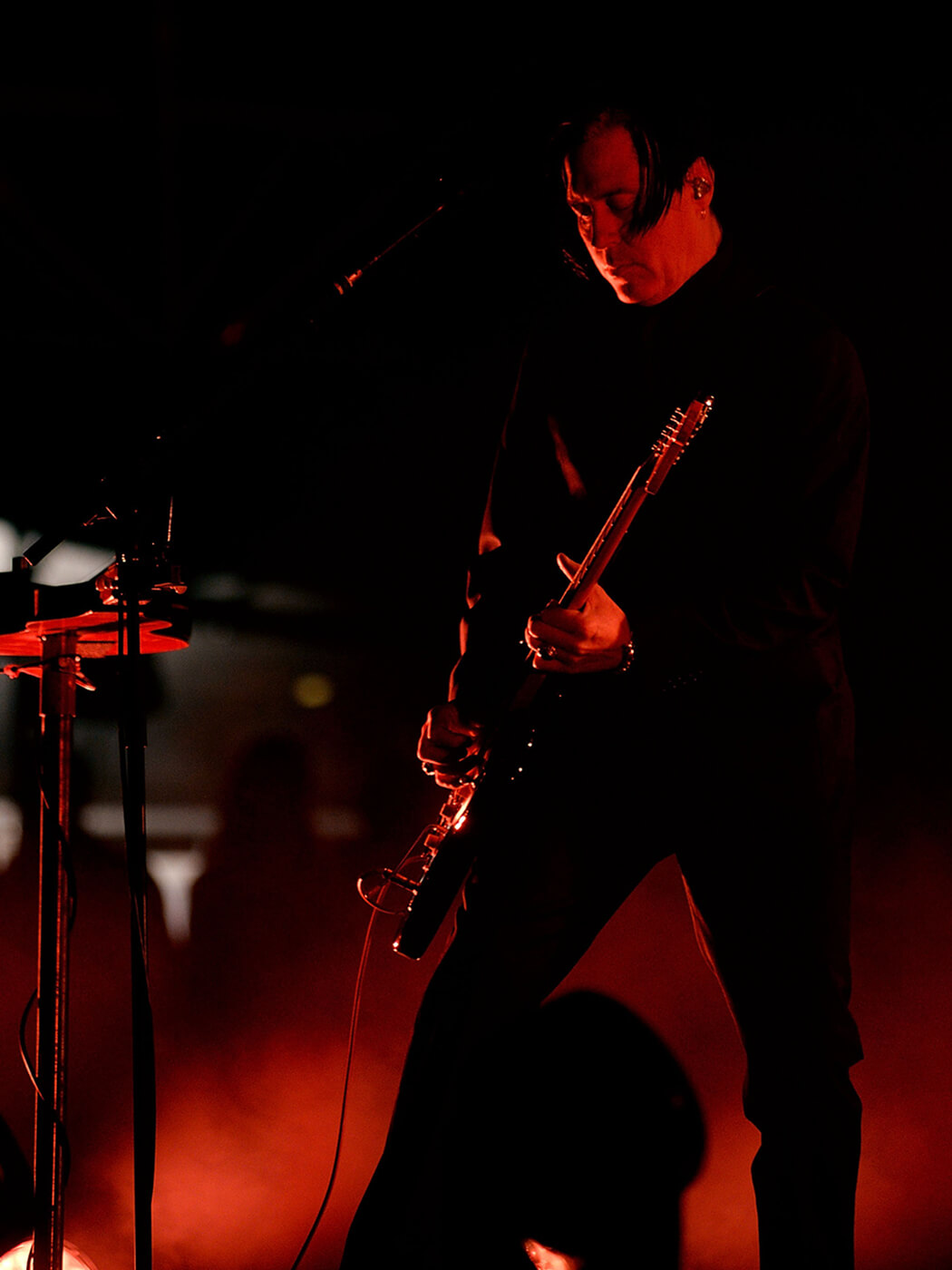Related Tags
The Genius Of… …Like Clockwork by Queens of the Stone Age
After Josh Homme’s brush with death and subsequent depression, the stoner rock icons produced one of their finest records.

Queens of the Stone Age at the Ziggodome in Amsterdam on November 26, 2013. Image: Paul Bergen/Redferns via Getty Images
Now with eight albums under their belt, Queens of the Stone Age are firmly one of this century’s defining guitar bands.
- READ MORE: Electro-Harmonix Lizard Queen review: an imaginary classic turned into a real octave fuzz
Rising from the ashes of stoner rock staples Kyuss, with frontman Josh Homme adding vocals to his bow as well as guitars, they made a name for themselves with their self-titled debut and second album Rated R, before making a huge breakthrough with 2002’s Songs for the Deaf. It featured tracks like Go With the Flow and No One Knows, but it wasn’t their first number one album in their native USA. Rather, that accolade went to 2013’s …Like Clockwork.
It’s not their heaviest album, but otherwise it might be one of their darkest. Released in June 2013, six years after the slightly divisive Era Vulgaris, it’s not a huge departure from their previous material, and it’s still a stoner rock album at its essence. However, it definitely feels lighter musically. There’s no metal here, Homme diving into heavy alt rock. But lyrically, it’s a different story, and feels very much a product of the circumstances.
Two years prior, Homme had a near-death experience following surgical complications, and began to struggle with his mental health as a result – it was the other members of the band who encouraged him back into music again, as they first re-issued their debut for its 15th anniversary and embarked on a tour in which they played it in full.
“I was hoping that playing the first record would really inspire me and make me fall in love with music again,” he told The Skinny in a 2013 interview. “But I think I was just lost, looking for something in the dark. In that dark I found this record.”

As per usual, Homme took on lead vocals and played guitar on the album too, while Troy Van Leeuwen also remained on guitar duties for his third album with the band, and it was the first album recorded with keyboardist and guitarist Dean Fertita too. Michael Shuman was on bass, and Joey Castillo played drums before being fired by Homme halfway through recording the album.
Dave Grohl – who joined the band for Songs for the Deaf – took over, becoming one of many prominent guest musicians on the album. Mark Lanegan, who featured on the same album, came back too, as did former member Nick Oliveri. They were joined by Trent Reznor, Scissor Sisters’ Jake Shears, Arctic Monkeys’ Alex Turner – and even Elton John – who comprised a star-studded supporting cast, even by QOTSA’s lofty standards.

And Homme’s guitar playing became a little cleaner, a little more removed from his Kyuss days. Over time, he began using Ampeg bass amps less frequently, and he’s gone from using a neck pickup to using a bridge pickup for a darker, yet less harsh, sound. His sound has more texture now. He used to be quite private when it came to sharing details of the equipment he used, but over the last decade has been more relaxed. On the album, Van Leeuwen played twelve-string guitar and slide guitar on top of his regular six-string, while Fertita also played slide guitar to add another dimension to the band’s sound.
This sort of evolution is what has always set Homme – and QOTSA – apart from the rest of the stoner rock pack; a willingness to take on and absorb different influences.

Take the groovy, funky Smooth Sailing, the almost Bowie-esque If I Had a Tail, and the haunting, slow-burning Kalopsia. And, the last couple of tracks, which are still probably among the least QOTSA QOTSA songs. In fact, you could almost file the album away with albums like Arctic Monkeys’ AM, released the same year, and their 2009 album Humbug, which Homme co-produced, rather than QOTSA’s older material.
But they never lose the strutting, sleazy rock that we’ve come to associate with them over the years. There was no massive genre shift. Rather, just a bit of evolution and growth – the sort that any good band will have when they’ve been around for so long.
And Homme has always been a little unconventional in his style. After all, one of his influences is polka – the Bohemian style of dance music – because that’s how he learned to play. He doesn’t often use guitars like Stratocasters and Les Pauls, instead going for instruments more obscure – he’s said before that he likes to use guitars that are “scarred”, or have an interesting backstory.

…Like Clockwork is ten years old, and so far it’s certainly aged well. It’s often ranked as one of their top two or three albums, even taking into consideration the two records they’ve released since. 2017’s Villains was a bit more dancey, whereas the recently-released In Times New Roman… represents a return back to their older, pre-Clockwork sound. While both great listens, neither live up to …Like Clockwork.
In turn, maybe …Like Clockwork doesn’t live up to Rated R or Songs for the Deaf, particularly for stoner rock purists, but it’s still an LP that glitters in their back catalogue.
